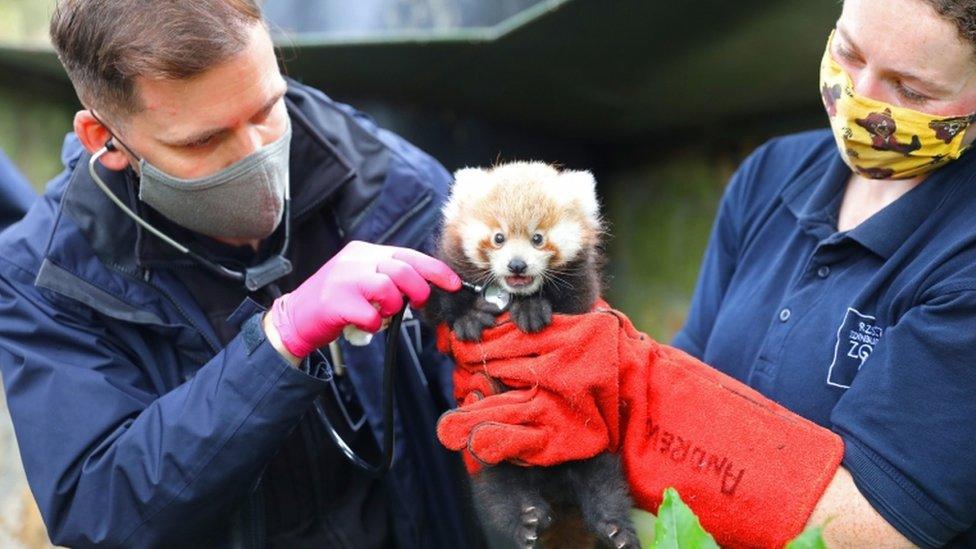Wildlife: This cute baby red panda finally has a name!
- Published
- comments

Ruby as born back in July
Edinburgh Zoo welcomed an adorable new animal into its family earlier this year and the cub has now been given a precious new name!
Ruby the red panda was officially named after having her first ever heath check at the zoo.
Staff at the charity were given the opportunity to vote for her name from a shortlist drawn up by zookeepers.
The final decision was announced on International Red Panda Day to help raise awareness of the endangered animal.
According to the World Wide Fund for Nature (WWF), there are currently less than 10,000 left in the wild.
The baby panda's fur will become redder and her tail will grow bushier as she gets older.
"Everyone at RZSS has worked so hard this last year, providing expert care for all of the animals at Edinburgh Zoo and Highland Wildlife Park throughout the pandemic and working to connect the public with nature during lockdown.
This was a small thing we could do to say thank you," said Jo Elliott who is the animal collection manager and carnivore keeper at Edinburgh Zoo.
"Red pandas are a visitor favourite here at the zoo and Ruby's birth is significant for this endangered species, which is at risk due to habitat loss and poaching."
There are currently only 10,000 red pandas left in the wild
Red pandas use their long and bushy ringed tails for several important purposes. Not only do they rely on them to help with their balance as they travel along tree branches, but they also wrap their tails around themselves to keep warm during the winter months.
Although red pandas are protected in most of their native regions which includes the Himalayas in Nepal, Bhutan, India, Myanmar and southern China, they are still hunted illegally for their fur and tail, which is seen as a lucky charm in some cultures.
Ruby, who was born in July, will remain in her den until she's around four months old, after which she'll be able to will start to exploring her surroundings.
The cub will venture outside with her mother first before moving around on her own as she becomes more independent.
- Published3 October 2017
- Published26 July 2014
- Published28 January 2019
